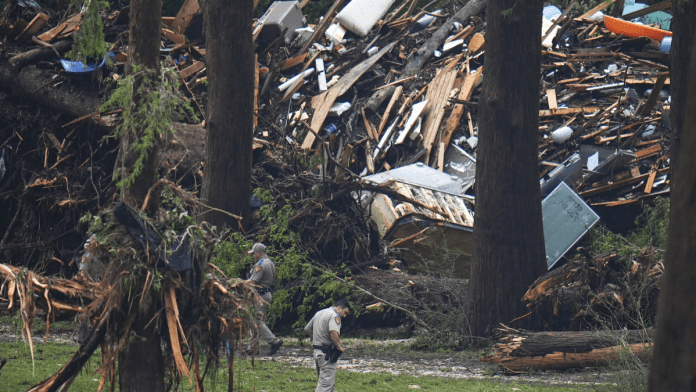🕒 Last updated on July 10, 2025
Across the United States, extreme weather events are happening more often—and they’re getting worse. Deadly floods, record-breaking heat waves, powerful hurricanes, and fast-spreading wildfires are no longer rare events. They’re becoming part of everyday life. Scientists say climate change is to blame, and the data proves it.
Dangerous Weather Is Becoming the New Normal
Back in 1987, central Texas experienced devastating floods that killed dozens. After rebuilding, many believed they were prepared for anything nature could throw at them. But this year, flash floods returned—stronger and more sudden than ever. In just a few hours, over 100 people lost their lives. What was once considered a freak event has become more common.
Other regions are seeing similar shifts. The Pacific Northwest, known for its mild summers, recently suffered a deadly heat wave. Western Canada felt the same. Hawaii, a tropical paradise, saw wildfires fueled by dry conditions. And in North Carolina, a place far from the coast, powerful storms brought destruction that many thought could only happen near the ocean.
According to government data, these events aren’t isolated. A special climate index that tracks extreme weather—like storms, floods, droughts, and temperature extremes—shows a sharp increase. The 10-year summer average is now 58% higher than it was in the 1980s. This means that dangerous weather is not just more frequent—it’s also more intense.
People Are Still Thinking About the Past
Even as extreme weather grows more dangerous, people across the U.S. continue to think in old ways. Many still believe that if they lived through one storm or disaster, they can survive the next. But the reality is very different. Today’s disasters are not like those from the past.
Experts call this “normalcy bias.” It means people assume things will continue as they always have. So, when warnings go out about hurricanes, floods, or heat waves, many people ignore them or assume they’ll be lucky. This false sense of safety makes it hard for people to take urgent action.
Afganistan’s Climate Wounds: The Impact of US Invasion and Global Inaction
For example, in Texas, flooding is common. But last week’s flood was anything but normal. A huge amount of rain fell in a very short time, overwhelming roads, homes, and emergency systems. Yet, some residents brushed it off as just another flood. That kind of thinking can cost lives.
In other parts of the country, people still believe that disasters only happen “over there”—somewhere else. But extreme weather is showing up in unexpected places. Coastal storms are reaching inland towns. Fires are spreading through suburbs. Heat waves are striking areas used to cooler climates.
Surviving one disaster doesn’t mean you’ll survive the next. Each event is different and can hit harder. Yet, this message hasn’t fully reached the public. People continue to rebuild in the same locations and make the same decisions, even as the climate keeps changing.
Weak Systems and Budget Cuts Add to the Danger
As extreme weather grows, the systems meant to protect people are falling behind. America’s infrastructure—its roads, bridges, power lines, and buildings—is aging. Many parts of the country were not built to handle today’s powerful storms or heat. Add to that the fact that more people now live in risky areas—such as coastal zones or wildfire-prone regions—and the danger increases.
But it’s not just physical systems that are at risk. Some of the country’s most important government agencies—like the Federal Emergency Management Agency (FEMA), the National Weather Service, and the National Oceanic and Atmospheric Administration (NOAA)—have faced major cuts in recent years. Staff have been laid off, programs have lost funding, and valuable experts have left.
These agencies play a key role in predicting weather, issuing warnings, and helping people respond to disasters. When they don’t have enough resources, everyone is less safe. A delay in a storm warning or a missed forecast can cost lives. The loss of experience and talent also makes it harder to recover and improve.
Meanwhile, cities and towns are struggling to keep up. With limited budgets and outdated systems, they’re often unprepared for major disasters. When a flood hits or a wildfire spreads, emergency responders can be overwhelmed. Roads may be blocked, power may go out, and people may not get the help they need in time.
In short, the country is facing a dangerous mix: stronger weather events, more people in harm’s way, and weaker systems to respond. And yet, many are still not treating it as a major crisis.

